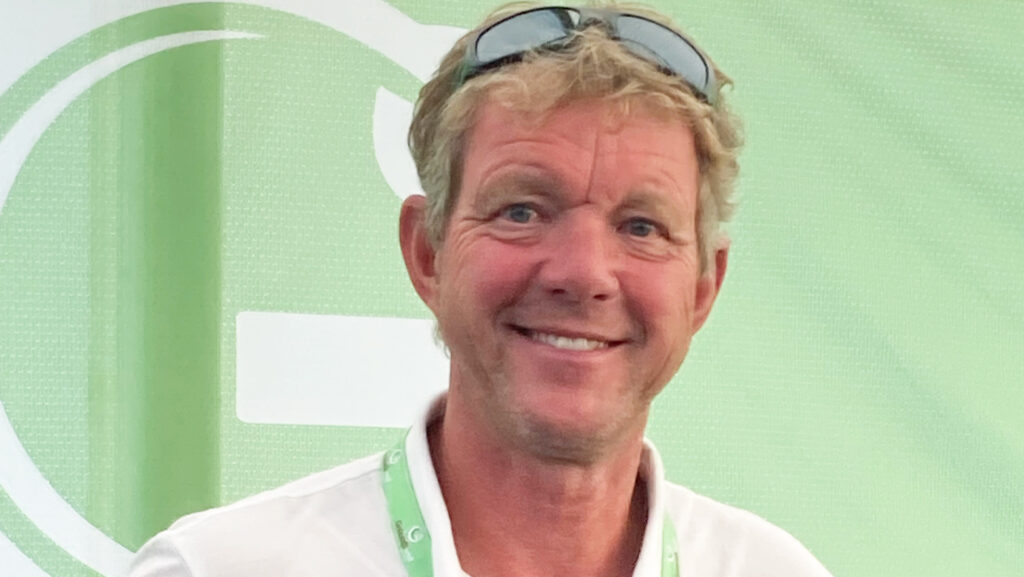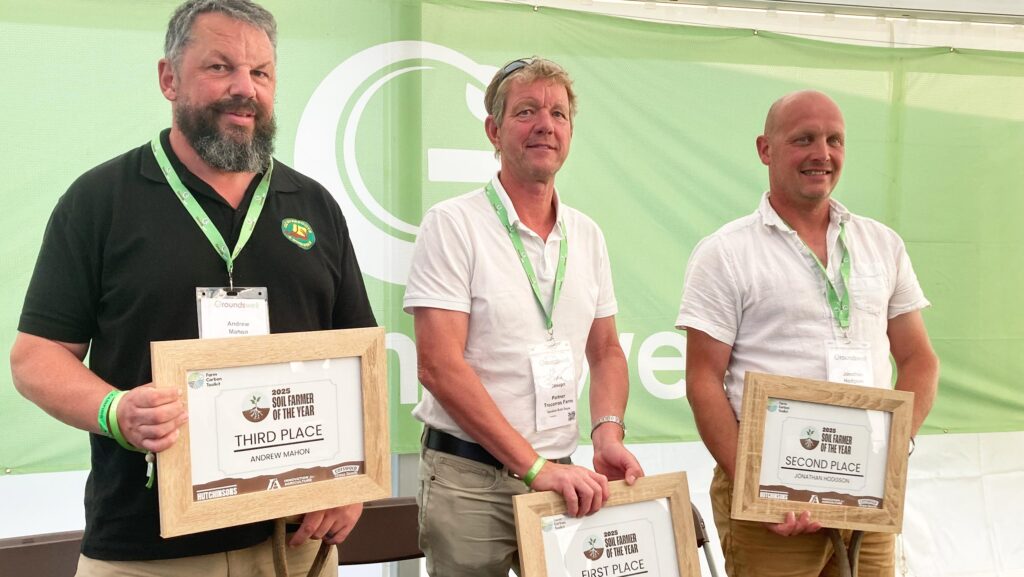Herefordshire seed grower crowned Soil Farmer of the Year
 Jonathan Joseph © MAG/Richard Allison
Jonathan Joseph © MAG/Richard Allison Herefordshire farmer Jonathan Joseph is this year’s Soil Farmer of the Year, in recognition of how he has reshaped soil management on his farm.
This has been achieved through a combination of widening the rotation to seven years, companion cropping, making his own compost, reducing chemical inputs and adopting 100% direct drilling.
Speaking to Farmers Weekly, he recalled when he took on the farm near Ross-on-Wye back in 2011, his sands over clay were yellow and lifeless.
Soils are now biologically active, easier to work and with rising organic matter levels.
See also: How a winning mixed soil farmer cut arable crop inputs
The starting point was to widen his rotation and, being a smaller farm (120ha), he looks to grow high-value crops. This includes herbage, wheat and peas for seed.
Jonathan started his regen journey with a Mzuri strip-till system, but over time found that the seed crops require a more precise approach.
“We need even establishment and crops to be up within four days.
“This, therefore, requires more precision over seed depth and good seed-to-soil contact,” he said.
Trecorras Farm
- Area 120ha
- Soil Sandy loam over clay
- Cropping Includes herbage seed, winter wheat for seed, spring wheat for Wildfarmed, oilseed rape for crushing and peas for seed
- Current drill Custom-built direct drill, made by Landwrx
- Livestock Red Poll cattle on grassland
So he opted for a bespoke direct disc drill made by local company Landwrx.
He can also vary the row spacings (200mm, 300mm or 400mm), as all crops are grown with companions.
For example, the oilseed rape is grown with five companions including vetch and crimson clover.
He makes his own compost and this, along with the increased nutrient cycling resulting from improved soil biology, means he hasn’t had to purchase any artificial P and K since 2015.
Insecticides have also been dropped, being last used in 2013-14.
“We sprayed the oilseed rape four times and still it to flea beetle. So we stopped using insecticides,” he said.
The competition is jointly run by Farm Carbon Toolkit and Innovation for Agriculture and sponsored by Cotswold Seeds and Hutchinsons.
Farm walks hosted by the three finalists are planned for later this year.

Andrew Mahon, Jonathan Joseph and Jonathan Hodgson © MAG/Richard Allison
The runners-up
In second place was Jonathan Hodgson, who farms 285ha of clay soils at Great Newsome Farm in East Yorkshire.
His system centres on strip tillage, companion cropping, cover crops, and integrated livestock, alongside the elimination of seed dressings and insecticides.
Third place was awarded to Andrew Mahon, who manages 800ha of Hanslope clay across Bedfordshire.
Since 2015, Andrew has shifted to a predominantly direct-drill system, with shallow discing being used to establish small seeds.

